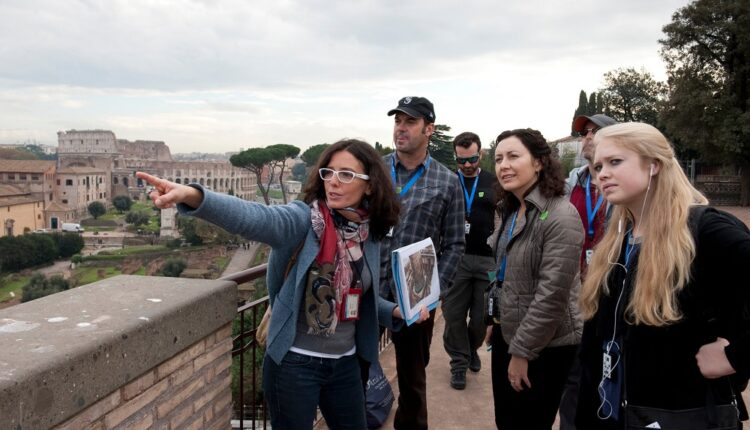Introduction: Beyond Facts and Figures
In the world of travel, destinations may dazzle, but it is often the tour guide who brings them to life. Far from being a mere narrator of dates and statistics, a gifted tour guide transforms ordinary sightseeing into a vivid tapestry of stories, insights, and personal connections. Through carefully chosen words, gestures, and local knowledge, these professionals become cultural ambassadors, storytellers, and sometimes even lifelong friends to those they lead. To travel with a remarkable guide is to see the world not just with your own eyes, but through the lens of someone whose passion and expertise reveal its hidden depths.
The Multifaceted Role of a Tour Guide
While most travelers think of tour guides as walking encyclopedias, their role encompasses far more than information delivery.
-
Storyteller: A guide breathes life into ancient stones and bustling markets by weaving history, myth, and anecdote into captivating narratives.
-
Interpreter: Beyond translating words, guides decode cultural nuances, gestures, and local customs, ensuring travelers engage respectfully and meaningfully.
-
Logistics manager: From navigating crowds to coordinating transport, guides often handle countless unseen details that make the experience seamless.
-
Safety guardian: A discreet eye on group safety, emergency preparedness, and local regulations ensures peace of mind.
-
Cultural bridge: Guides act as mediators between local communities and visitors, fostering mutual respect and understanding.
In essence, a tour guide is not merely a professional but a multi-talented host whose craft shapes the entire journey.
The Subtle Art of Storytelling
Great guiding is as much art as science. Facts alone rarely captivate; it is how they are presented that leaves travelers spellbound.
-
Context over chronology: Rather than reciting dates, skilled guides anchor events within broader cultural, social, or human stories.
-
Human connection: Tales of everyday life—like a grandmother’s recipe or a local artisan’s struggles—make places relatable and real.
-
Dynamic delivery: Humor, dramatic pauses, and the rhythm of speech turn history into a living performance rather than a lecture.
-
Adaptability: Reading the group’s mood and interests allows guides to adjust their stories on the fly, keeping each experience fresh and responsive.
This blend of research, empathy, and performance art transforms guiding from information-sharing into genuine inspiration.
Guiding Styles: Tailoring the Journey
Every guide brings a unique voice and approach, shaped by personality, training, and cultural context.
-
The Historian: Steeped in scholarship, this guide offers depth and nuance, perfect for travelers who relish intellectual discovery.
-
The Enthusiast: Overflowing with passion, they make even modest sites feel electrifying through infectious energy.
-
The Insider: Often locals, these guides share hidden spots and personal anecdotes that rarely appear in guidebooks.
-
The Entertainer: Skilled at humor and theatrical flair, they ensure even dense material feels light and memorable.
The finest guides blend elements of each style, adapting to the group and the moment to craft an experience as unique as the travelers themselves.
The Modern Guide: Evolving Roles in a Changing World
In an era of smartphones, audio tours, and AI-driven travel apps, the question naturally arises: why do travelers still seek human guides? The answer lies in the irreplaceable value of genuine human connection.
-
Interactive dialogue: Unlike apps, guides can answer spontaneous questions, share fresh local insights, and react to weather, mood, or special events.
-
Personalization: A guide can tailor commentary to family interests, academic backgrounds, or even mobility needs.
-
Cultural nuance: Technology struggles with humor, context, and subtle gestures that guides navigate effortlessly.
-
Sustainability advocacy: Modern guides often champion responsible tourism, educating visitors on conservation, local crafts, and community support.
Rather than being replaced by technology, many guides embrace it—using tablets for visuals, sharing digital maps, or connecting travelers to local artisans online—enhancing rather than diminishing the personal touch.
Qualities of an Exceptional Tour Guide
While training and language skills are fundamental, what elevates a guide from competent to exceptional is often less tangible.
-
Passion: A deep, genuine love for their city, culture, or subject shines through and becomes contagious.
-
Empathy: Sensitivity to group energy, cultural differences, and individual needs creates an inclusive, comfortable atmosphere.
-
Communication finesse: Clear speech, engaging tone, and well-timed humor keep even complex topics accessible and lively.
-
Continuous curiosity: The best guides keep learning—new research, changing local dynamics, or emerging trends—to keep their narratives fresh.
-
Integrity: Honest storytelling that acknowledges complexity or controversy, rather than glossing over difficult histories, earns respect and trust.
These human qualities turn a tour into a shared journey, not just a scripted performance.
Beyond the Tour: Guides as Cultural Stewards
Perhaps the greatest, yet least visible, contribution of tour guides is their role as guardians of cultural heritage and local identity.
-
Economic impact: Guides support local economies directly and encourage travelers to spend in authentic, community-based businesses.
-
Education: By telling stories rooted in respect, they challenge stereotypes and deepen understanding.
-
Preservation: Guides often advocate for the protection of historical sites and natural wonders threatened by over-tourism.
In this sense, guides act as invisible threads linking past and present, traveler and host community, ensuring that tourism benefits rather than exploits.
Conclusion: The Journey, Made Human
A tour guide’s craft may seem ephemeral—words spoken into the breeze, footsteps echoing through ancient halls—but its impact endures. Long after travelers return home, it is often the guide’s voice, humor, and humanity that remain entwined with memories of place.
In a world rich with information yet often poor in context and connection, the tour guide stands as a living bridge: not just a conveyor of facts, but an artist, interpreter, and friend. And in doing so, they remind us that travel, at its finest, is not just about seeing new places—but about understanding them, and ourselves, more deeply.


Comments are closed.